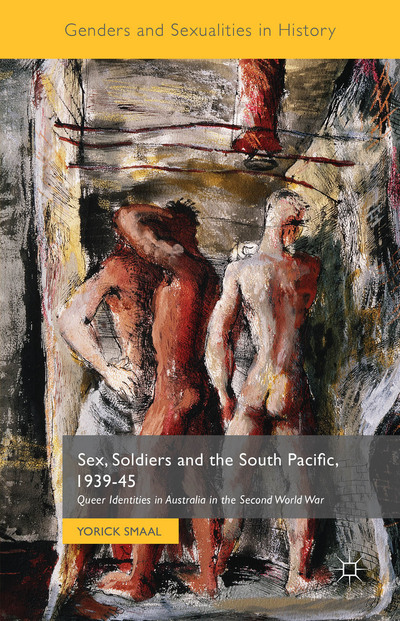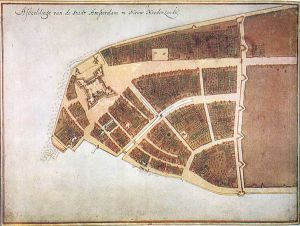Last week I went to the book launch of Yorick Smaal, Sex, Soldiers and the South Pacific, 1939-45, a fascinating study of same sex relations between men during the Second World War, in Australia and the Pacific.
Much of the book is based in Brisbane, which for a brief time between 1942 and 1945, played a central role in the Pacific war effort. A million American servicemen passed through my hometown during these years. They were, according to the catchphrase, ‘Over paid, oversexed, and over here’ – and for some of them, as well as for the Australian servicemen and civilians they met, the turbulence of war brought with it new opportunities for sexual expression – and opportunities for new forms of sexual expression.
Some of the people Smaal writes about were openly homosexual – or as open as it was possible to be at a time when such activity was illegal. Others were experimenting surreptitiously with homosex (Smaal’s preferred term) as a passing phase that they barely acknowledged to themselves.
Smaal is particularly interested in the geography of sexual encounters, so I found it fascinating to see my city laid out in a new way. My first memories of Brisbane date from the 1950s but my family’s stories go back to wartime experiences. My father used to tell the tale of seeing a man cooking sausages over the Flame in the Shrine of Remembrance in Anzac Square. When Dad questioned him, the man said he was an ex-serviceman, which seemed to be an adequate justification for his transgression. I wonder, though, if Dad realized at the time that this place was a gay beat?
At school, we were told not to wait for buses in the city at the covered bus stop in William St – another pick up point. And my mother’s dark but obscure references to the Pink Elephant Café make more sense now – the proprietor of the café was Frank Mitchell, a close associate of the artist Donald Friend, whose painting of naked men showering is on the cover of Smaal’s book. Mum visited the café as a teenager, all the same, though whether she met ‘Lana Turner’, ‘Pearl of the Pacific’ and the other cross-dressing waiters, she has never divulged.
By the standards of the day, I think my family was pretty relaxed about same sex relationships. My grandparents had a self-contained flat attached to their old Queenslander, which they rented out to a series of ‘confirmed bachelors’. One of them was the distinguished poet Val Vallis. My grandmother got on famously with them, and many of them came to her funeral.
Smaal’s research for this book is remarkable. Sodomy was illegal, so there are numerous court and police records – both civilian and military, Australian and American – and he has made good use of these. Many consensual encounters never reached the courts, though, especially if the participants were discreet and could conduct their encounters in privacy, though this was not always easy in a military setting. Smaal has interviewed a few remaining survivors of this era, and has used earlier interviews from the 1980s onwards. There are also memoirs and diaries. Faces are pixellated and pseudonyms are used where an unexpected revelation could cause someone embarrassment.
Sources on sex are always hard to come by, and so are sources on illegal activities, so Smaal is working under a double disadvantage, but one of the characteristics of military organizations is that they are vast bureaucratic regimes with a capacity for generating endless paperwork – the raw material of historians.
Both the Australian and the American armies worried about homosexuality within their ranks, and its implications for the civilian community. These concerns were less moralistic than practical: as with women in the army today, the top brass worried that consensual same sex relationships might change the group dynamics of the fighting unit. They worried about non-consensual sex, or sex with young boys (though since all homosex was illegal, no legal age of consent existed). They worried about venereal disease.
Smaal looks beyond Brisbane to other places across the South Pacific where soldiers met and mingled – and encountered other races and cultures, with different attitudes towards homosexual relations, looking particularly at the experiences of the Australians in New Guinea and the Americans in New Caledonia.
Studies of same sex relations can often be a rather cheerless read, partly because medical and criminal records invariably form an important part of the research on which they are based. What I like particularly about Smaal’s book is that his subjects are not constantly viewed in the dock, or under the microscope, but were frequently joyful participants of the world they inhabited, ‘a very social world. Australian girls and US belles made their own fun. Friends and lovers organized regular get-togethers and sing songs.’ [83] It sounds like the obverse of the nurses and marines in South Pacific, and no doubt it was fun – though the slightly hysterical fun that young men on a battlefront engage in, constantly aware of their own mortality in a war zone.
It was a world that operated below the radar. Though many of the men Smaal describes were good soldiers and brave men, they inhabited a world that was out of kilter with the dominant narrative of manly fighting men and the Anzac spirit. As Robert Aldrich said, when he launched the book last Thursday, the word ‘Anzac’ is even missing from the index – and how good is that.








